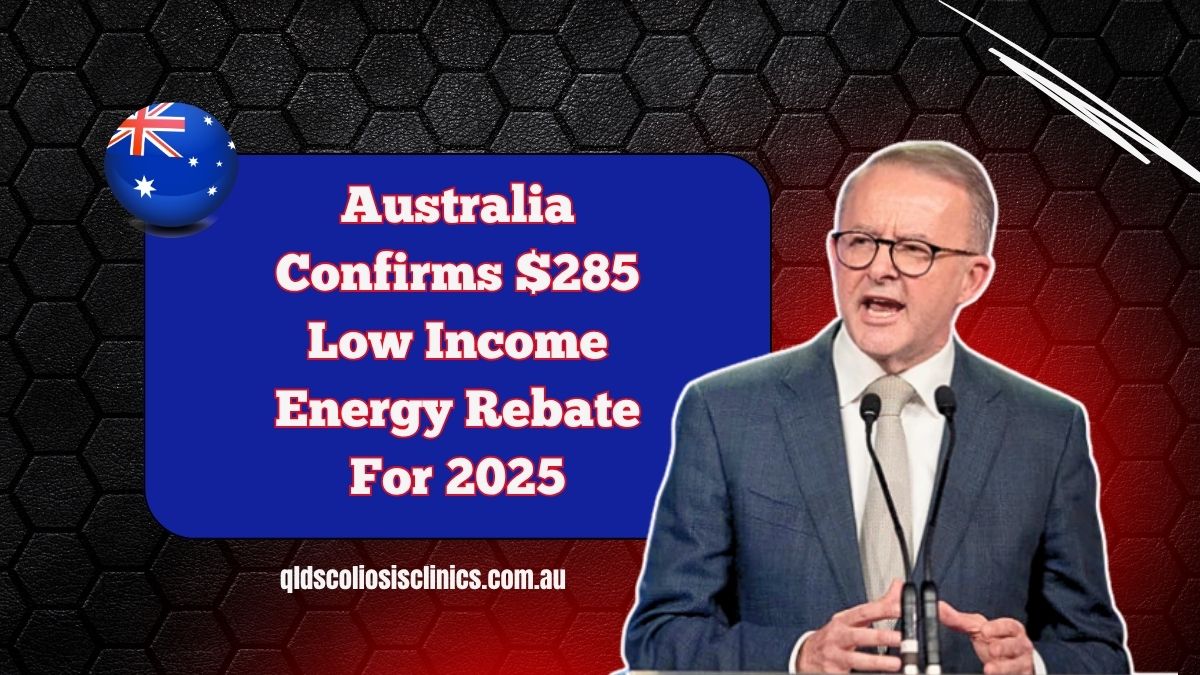As part of its ongoing cost-of-living relief measures, the Australian Government has confirmed a $285 payment under the Low Income Energy Rebate 2025, set to begin disbursal in July 2025.
This rebate is specifically designed to assist low-income households, seniors, and vulnerable individuals in managing their rising electricity bills.
In this article, we break down eligibility criteria, payment methods, new updates for 2025, and how you can apply before the deadline.
Who Qualifies for the $285 Low Income Energy Rebate?
The Low Income Energy Rebate 2025 targets Australians receiving government support or holding valid concession cards. To be eligible, recipients must:
- Hold a Centrelink Pensioner Concession Card, Health Care Card, or DVA Gold Card
- Be a resident of New South Wales or another participating state/territory
- Be the primary account holder of the electricity bill
- Apply via their electricity retailer or through the Services Australia system
How the $285 Rebate Payment Works
The $285 energy rebate is not paid as cash. Instead, it is applied as a credit to the customer’s electricity bill. Here’s how the distribution unfolds:
Payment Breakdown
| Stage | Details |
|---|---|
| Eligibility Confirmation | Services Australia verifies concession card status |
| Application Submission | Through electricity retailer or myGov portal |
| Rebate Application | Energy retailer applies $285 credit to customer’s bill |
| Dispute Period | 30-day appeal window for missed or delayed applications |
This streamlined structure ensures quicker verification and direct utility relief for those in financial stress.
New Updates in the 2025 Energy Rebate Scheme
Compared to earlier years, the 2025 scheme introduces several noteworthy improvements:
- Standardized Payment – All eligible households receive $285, eliminating regional inconsistencies.
- Faster Verification – Direct integration with Services Australia means reduced paperwork for concession holders.
- Inclusion of Shared Households – Tenants or flatmates can also receive the rebate, if their name is on the energy bill.
These upgrades improve accessibility and fairness, especially for renters, seniors, and people with disabilities.
Why the Rebate Matters in 2025
Australian households are facing mounting energy bills, with electricity tariffs increasing by an average of 6% as of July 2025. For many on fixed or limited incomes, this rise creates added financial pressure.
The $285 rebate can cover several weeks’ worth of power for modest households, especially during winter months. When paired with energy retailer hardship programs or other federal cost-of-living payments, this support plays a crucial role in preventing energy debt and disconnection.
How to Apply for the Rebate
If you believe you qualify:
- Visit your electricity retailer’s website or contact their customer support.
- Alternatively, log into myGov and navigate to Services Australia to confirm eligibility and link your energy account.
- Ensure your concession card is current and your name appears on the energy bill.
Important: Applications for the July 2025 cycle are open now. Apply early to avoid processing delays.
The Low Income Energy Rebate Australia 2025 offers direct support to those who need it most. With $285 applied directly to electricity bills, this initiative eases pressure from energy costs and promotes energy security.
Eligible residents should ensure their information is up to date and apply without delay through their provider or Services Australia.
FAQs
How do I apply for the Low Income Energy Rebate in 2025?
You can apply through your electricity retailer or the myGov portal if linked with Services Australia.
Can renters qualify for the $285 rebate?
Yes, renters can apply if their name appears on the electricity bill and they meet eligibility requirements.
Is the rebate counted as taxable income?
No, the $285 energy rebate is not considered taxable income. It is a non-assessable government benefit.
